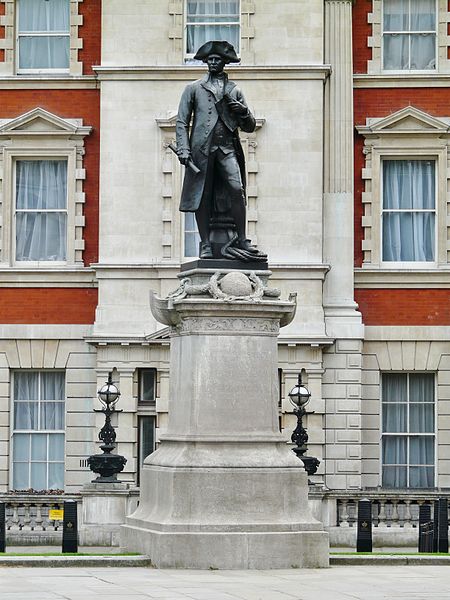Statue of Captain James Cook, The Mall
1914 establishments in England1914 sculpturesBronze sculptures in the United KingdomBuildings and structures on The Mall, LondonGrade II listed statues in the City of Westminster ... and 5 more
London stubsMonuments and memorials to James CookSculptures of men in the United KingdomStatues in LondonUnited Kingdom sculpture stubs

A bronze statue of Captain James Cook by Thomas Brock is located near Admiralty Arch on the south side of The Mall in London, United Kingdom. The statue was completed in 1914 and is maintained by The Royal Parks. It is mounted on a stone plinth.The idea for the memorial was first proposed by Joseph Carruthers, the former prime minister of New South Wales, who had written to The Times complaining of the lack of a statue to Captain Cook in London. The completed work was unveiled on 7 July 1914 by Prince Arthur, Duke of Connaught and Strathearn.
Excerpt from the Wikipedia article Statue of Captain James Cook, The Mall (License: CC BY-SA 3.0, Authors, Images).Statue of Captain James Cook, The Mall
Spring Gardens, London Covent Garden
Geographical coordinates (GPS) Address External links Nearby Places Show on map
Geographical coordinates (GPS)
| Latitude | Longitude |
|---|---|
| N 51.50629 ° | E -0.12925 ° |
Address
Captain James Cook
Spring Gardens
SW1A 2BU London, Covent Garden
England, United Kingdom
Open on Google Maps











